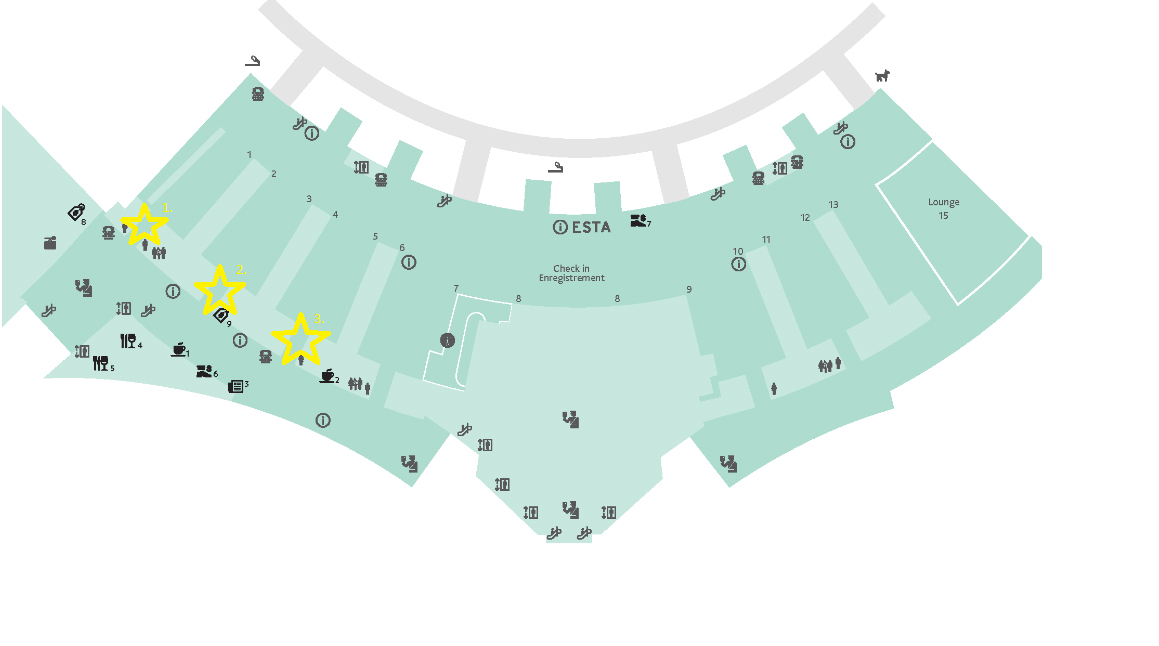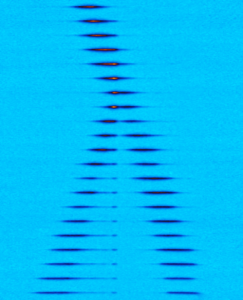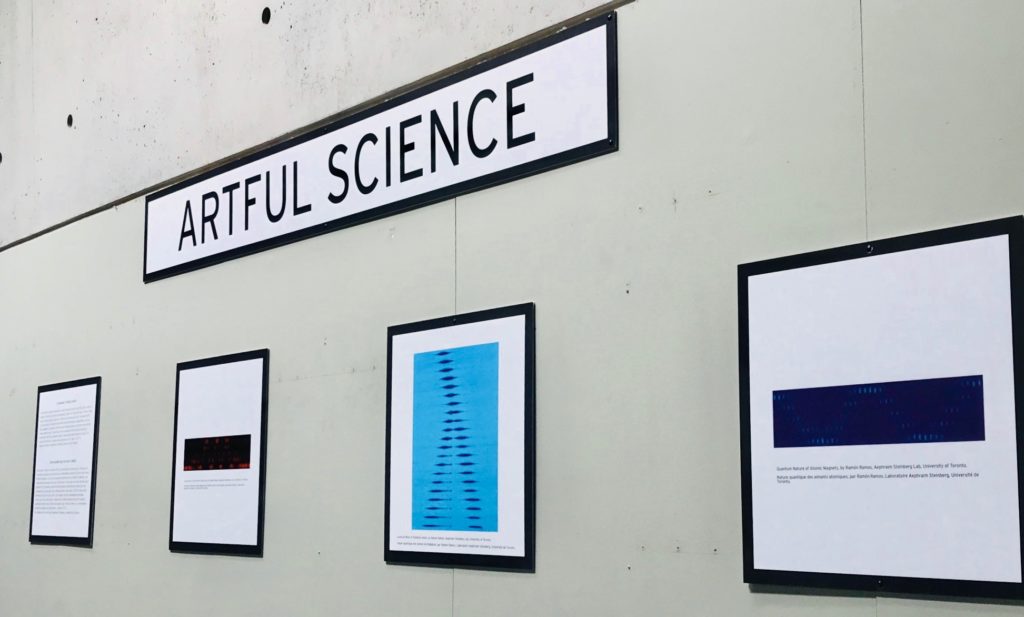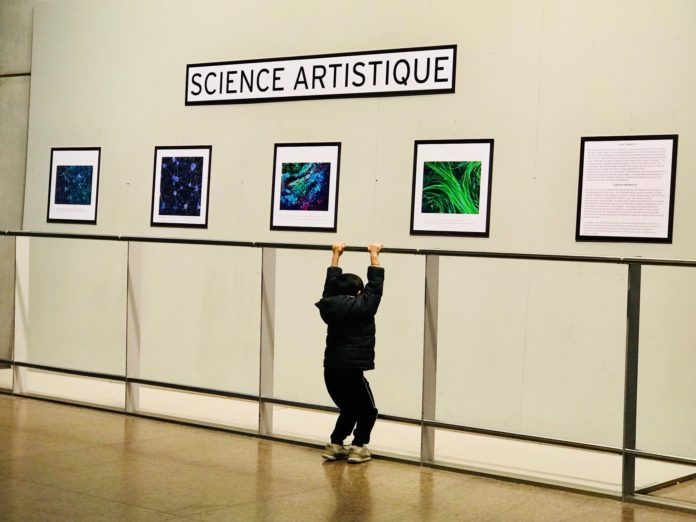It may be cool outside this holiday season, but University of Toronto graduate student Ramón Ramos is fairly certain he knows somewhere colder.
Along with his thesis advisor Aephraim Steinberg, a professor in the Department of Physics at the University of Toronto, Ramos works in a lab where atoms are cooled to nanokelvin temperature scales. These temperatures hover only billionths of a degree Celsius above absolute zero: the coldest temperature possible, where molecules would have no motion or thermal energy at all.
“To my knowledge, it is probably the coldest place in Canada,” Ramos says.
At temperatures this low, atoms start to behave like waves, and a very different picture of the world around us starts to emerge.
Until the end of the year, passengers travelling through Toronto Pearson International Airport will get the chance to glimpse this strange new reality too. The Artful Science exhibit, which is on display in the airport’s Terminal 1 Departures area, includes three images of Ramos and Steinberg’s research on quantum physics.

No matter how small the possibility, barriers can be overcome
Quantum mechanics, Steinberg explains, is “the theory of really small stuff”.
At these small scales, the regular laws of physics that we’re used to — classical mechanics — no longer work the same way. While classical mechanics allows predictions of where an object should be at a certain time, quantum mechanics says that objects exist in a superposition of many different states all at once. This is the wave-like behaviour that Ramos and Steinberg are searching for in their experiments.
“But it doesn’t make sense to have this theory for atoms and another theory for bigger stuff… It turns out that the position of anything is actually a little bit uncertain according to quantum mechanics,” Steinberg says. “If there are two different ways you could behave […] then in some sense you could be doing both at the same time.”
One consequence of this quantum uncertainty is an effect known as quantum tunnelling. The idea is that when a quantum particle is confronted with a barrier, there is some probability, however small, that one of the many states contained in its quantum superposition is one where the particle has made it past the barrier, even when the particle doesn’t have enough energy to have done so.
Instead of being trapped in the barrier as it would in classical mechanics, the particle digs its way through a quantum tunnel, suddenly arriving at the other side.
“There’s no such thing in classical mechanics,” Ramos says. “A particle has a definite energy. But in quantum mechanics, there is a possibility that even if the energy of the particle is below the barrier height, it can tunnel through it.”

Ramos and Steinberg are interested in figuring out how long it takes a particle to tunnel through a barrier. It is a question that, according to Ramos, has been debated since the beginning of quantum mechanics.
This is where the extremely cold temperatures Ramos mentioned come into play. At these temperatures, atoms act like waves, and the superposition of states contained within their wave-like behaviour becomes significant enough to be observed in the lab.
This quantum behaviour is captured in the images Ramos has on display as part of the Artful Science exhibit. In one image, Ramos shined a light at an extremely cool cloud of rubidium atoms and was able to see atoms get reflected by, climb over, and get stuck in a barrier. Behaviour like this is typical of waves.
This was the first time anyone had ever observed this effect in this particular geometry, Steinberg says.
It’s one step closer to figuring out just how long quantum tunnelling takes, and better understanding the quantum nature of our Universe.
Science-based art illuminates the beauty of the Universe
To Ramos and Steinberg, art is a gateway to the science they work on every day. That’s part of why contributing to the Artful Science exhibit was important to them.
“Art tends to reach a broader audience,” Ramos says. “People engage with art itself, and with the backstory, and that eventually leads to science.”

Art can also help to shed light on the scientists themselves, and what motivates them.
“Many of us are driven by trying to understand the beauty, the mystery, and the elegance of the Universe,” Steinberg adds. “And I think to show people things in that light, to get them to see that there can be something beautiful behind the science, and that maybe part of what the scientists are looking for is also a kind of beauty — I think that changes the way they think about science, and about scientists.”
The Artful Science exhibit is on display now at Toronto Pearson International Airport’s Terminal 1 Departures area, and will remain there through the end of 2018.








































